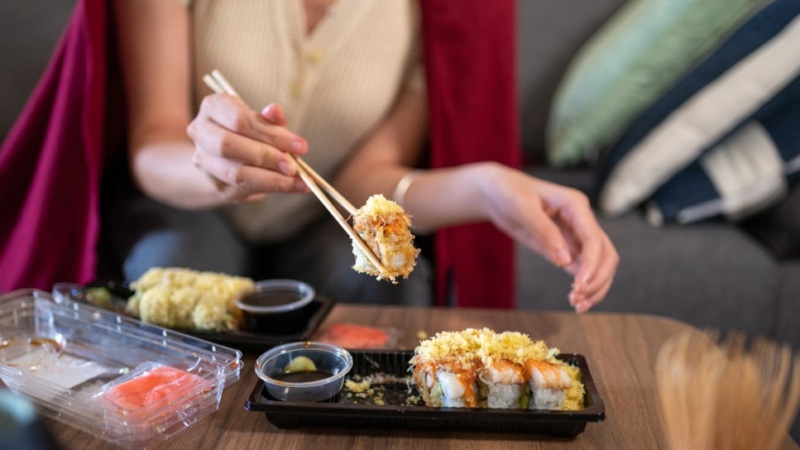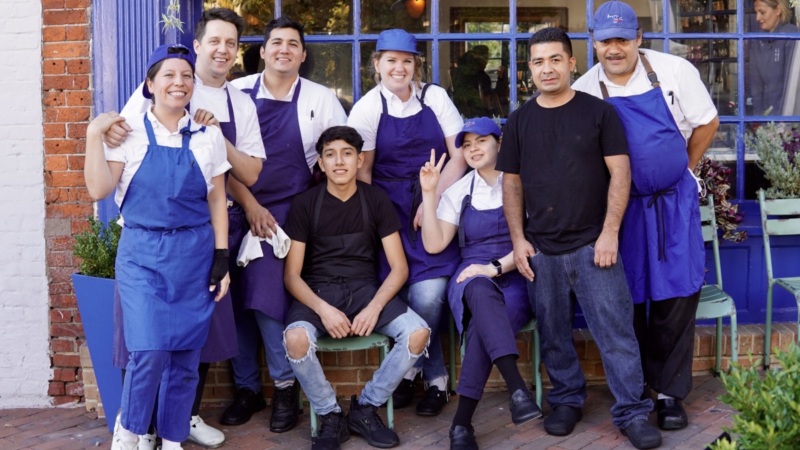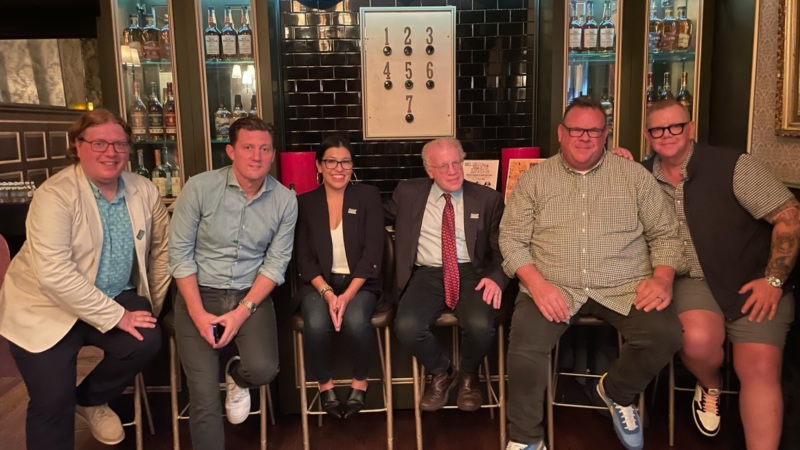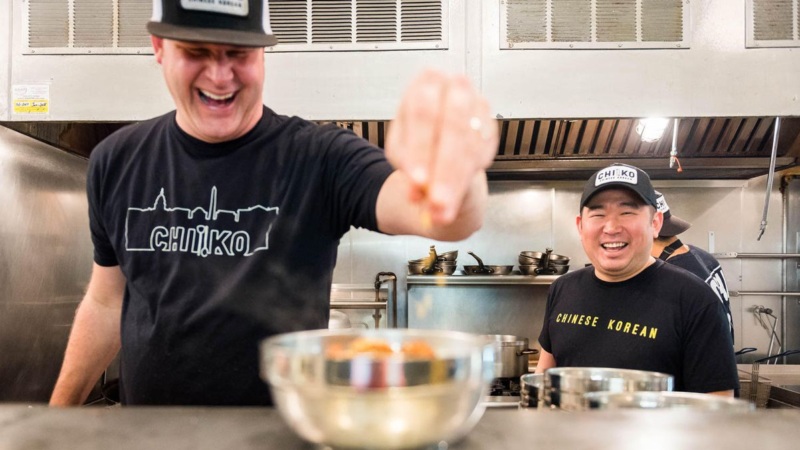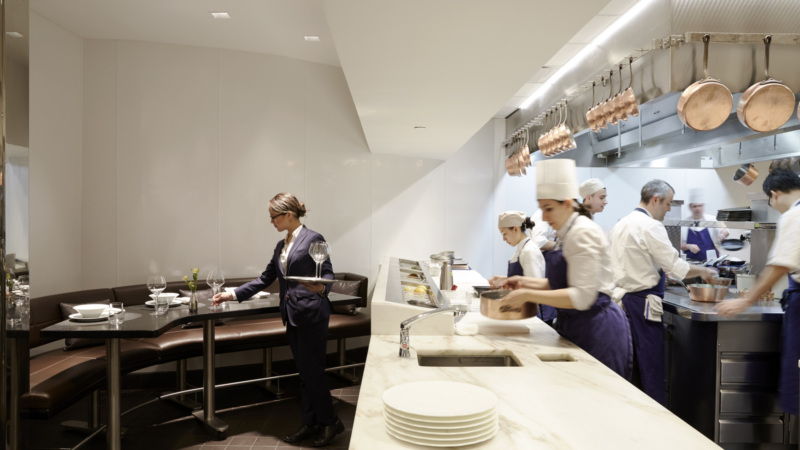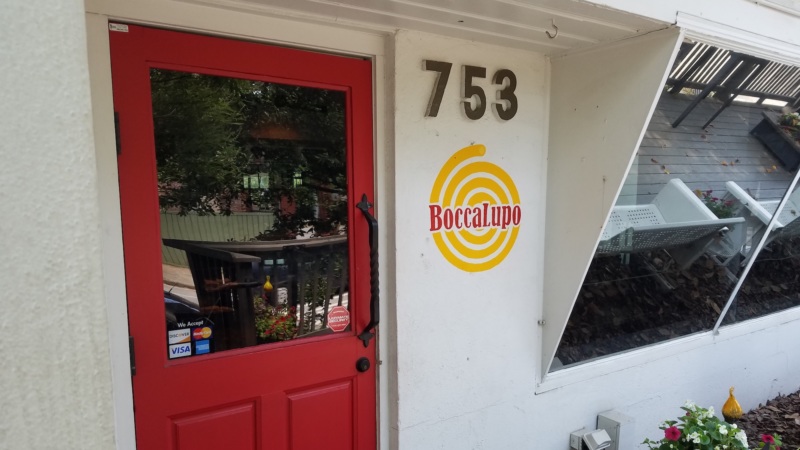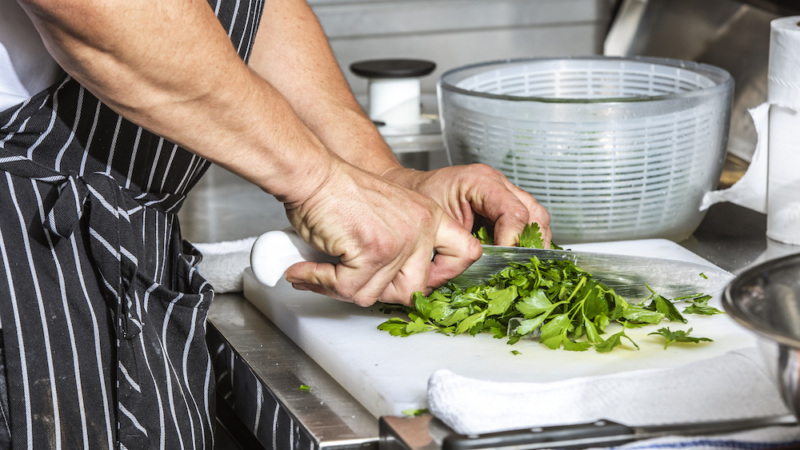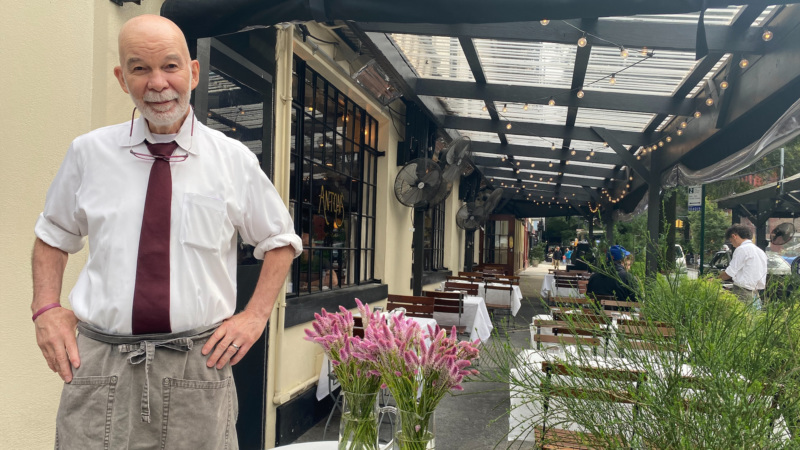

Get Your Restaurant’s Website Ready for Reopening with These Five Tips
As the world’s restaurants open up region by region, it is more important than ever to ensure you’re communicating updated information to potential guests. Your restaurant’s website is one of the most important sources of information for diners to learn about your reopening plan, updated COVID-19 safety protocols, daily specials, and alternative revenue streams like meal kits and events.
Resy is proud to partner with BentoBox, a leading platform for restaurants to manage their online presence. Elise Musumano, Senior Product Marketing Manager for BentoBox, encourages restaurant operators to think of their website from the experience of a visiting diner.
“There are two types of restaurant websites,” explains Musumano. “There is one where the restaurant is passively giving the diner information that is hard to find and not updated frequently. The second proactively communicates using updated components based on the restaurant’s business activities. This is particularly important anytime your priorities change, but especially now with the pandemic and how quickly things are changing.”
Musumano walks us through the website of Emmy Squared, an expanding pizza restaurant that uses Resy for reservations and BentoBox for website management, to illustrate best practices. Follow along to ensure your business’ website is ready for reopening.
1. Use Alerts and Banners To Draw Attention to Updates
Alerts are messages that are very visible, either by popping up when a visitor lands on your site, or by not being flush with the rest of the homepage through shape or color differentiation. Using alerts is a great way to communicate real time updates to guests.
Musumano recommends using an alert to inform diners of daily specials, changes to operating hours, or updated safety guidelines. Emmy Squared is using a pop-up alert to share information about indoor dining, lunch specials, and ordering meal kits.
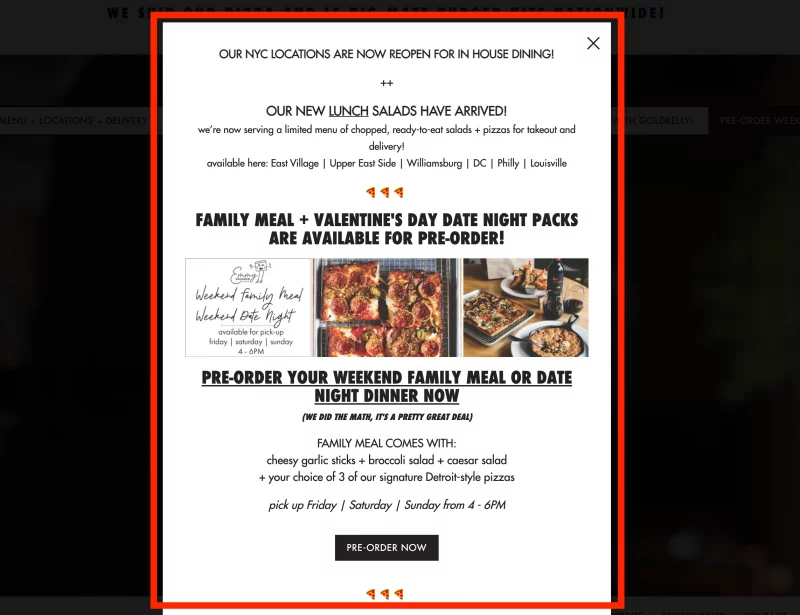

BentoBox users can set a publish date and an unpublish date for any alerts. “For example, if I have a special starting on Monday, I can set up my alert in advance to publish on Monday rather than having to manually activate it,” says Musumano. “And since the special ends on Friday, I can configure it to automatically take that message down. This frees up time for restaurants to step away from the back-office computer and focus on operations.”
2. Ensure Your Primary Call to Action (CTA) Is Aligned With Your Business’ Biggest Priority
The CTA, or Call to Action, is a space where you want to draw attention to an step that you want your site visitors to take. There can be a variety of recommended actions on your site, from booking reservations to subscribing to your newsletter. You want to pick at least the top three goals for your business and make them easily discoverable on your homepage. Then choose the highest priority action, or what’s most impactful to your business, and set that as your primary CTA.


“To differentiate your primary CTA, you want it to be colored differently than all of the other buttons,” says Musumano. Emmy Squared is focusing on driving meal kit orders, so they’ve highlighted this in a black button at the end of their navigation bar.
If you’re reopening for indoor or outdoor dining, you can draw attention to it by setting your Resy booking widget as your primary CTA.
3. Build Ongoing Relationships with Social Media Links and Contact Forms
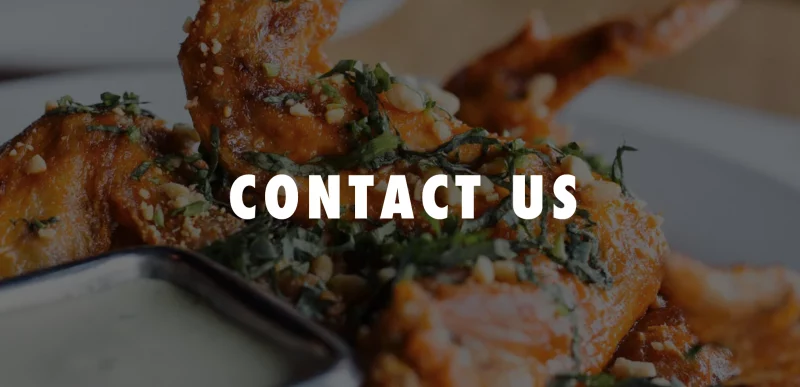

When people visit your website, you want to capture that intent – you don’t just want them to leave if they’re not immediately making a reservation or ordering. “Making sure there’s a visible way for anyone landing on your site to keep in touch with you is essential,” explains Musumano. “This way, they are raising their hand for you to then reach out anytime you have an update.”
Social media is one way to grow your relationships, so ensure you have your social media account linked in the footer of your page so they’re always easy to find. To take relationship building to the next level, consider adding contact forms.
“Your website should be a way to communicate back and forth with your diners. Having forms helps you determine what your diners’ intent is, allowing them to give you the information that you need in order to get back to them.”
BentoBox customers can add forms easily through their platforms, but restaurants using other services can take advantage of a number of free form building platforms. The next level up from the contact form is an event form.
4. Use Images to Reset Expectations for your Guests
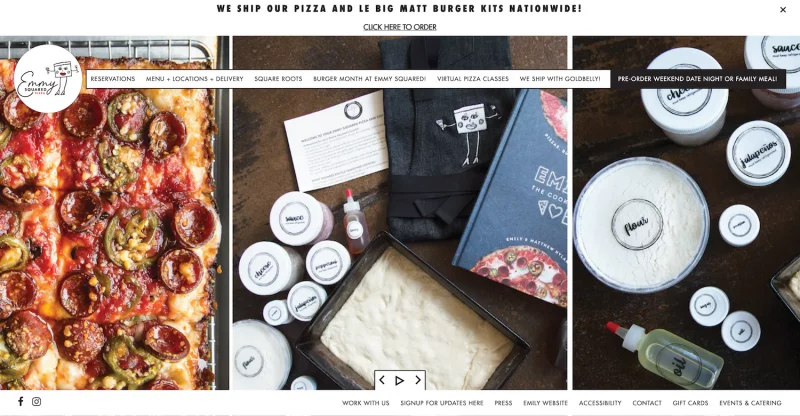

Having eye-catching, aesthetically pleasing, high quality images on your site is always essential for any restaurant. But it’s important to use imagery now in a post-pandemic landscape to set expectations with guests based on your current environment and offerings. Emmy Squared is doing this by updating their homepage to display their meal kits.
Musumano sees a big opportunity for restaurants to include images of any updated floorplans, like outdoor dining setups or partitioned spaces. “Diners are having to go to outside sources to find descriptions or pictures of what the setups look like,” says Musumano. “But taking a picture yourself and putting it on your site is powerful so that people know what to expect.”
5. Take the Opportunity to Update Your Website’s Accessibility Features
Use this moment of rebuilding and reopening to ensure your website is accessible to everyone. A quick and impactful change is ensuring all of your images have alt text that describe the image for those that are using screen readers. If you have a PDF of your menu on your website, ensure that you also have the text of the menu posted as well.
BentoBox uses a service called ADA Pro by AudioEye to scan websites for ADA vulnerabilities, provide recommendations for updates, and provide a digital certification to post on the website. The visual confirmation of certification also helps prevent lawsuits related to ADA violations. ADA Pro also provides an accessibility toolbar on BentoBox sites that includes voice commands, keyboard shortcuts, and a reader that lets you adjust text to make it easier to read.


Musumano also recommends including an accessibility page as demonstrated by Emmy Squared. “Giving the information for who to contact if someone with a disability is ever having trouble accessing the site empowers users to take action and become vocal champions for your business.”
Resy customers receive 25% off setup fees and 10% off all monthly subscriptions and add-ons in perpetuity. To learn more or become a BentoBox customer, click here.
*Opinions and views in articles shared on Resy OS are presented for the purpose of discussion and commentary on topics of interest in the restaurant industry; they should not be viewed as substitutes for advice given by professionally engaged business consultants and advisors.


